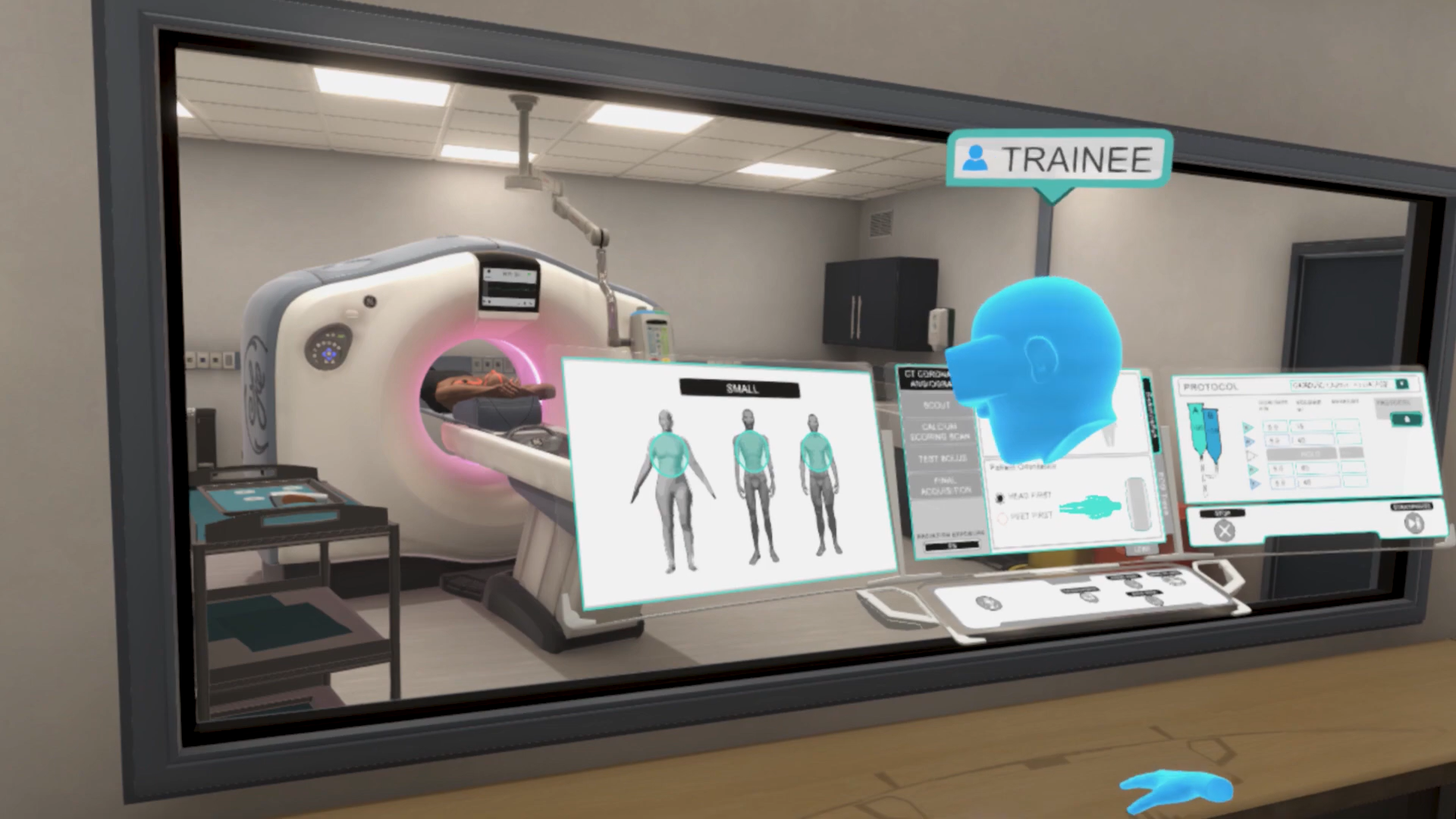As the emerging trends of Artificial intelligence and its widespread use in almost every industry form the technology trends 2024, the Edtech landscape is no exception. There has been an adoption of AI for data analysis, collection and planning in education that has influenced learning outcomes and school management greatly. This article will delve into how data analysis can be used to enhance student’s success and discuss potential challenges and future implications.
1. The vital role of data analytics in Education
Educational data is now considered most important in the information world as it encompasses much more than just numbers, such as performance metrics, attendance records, and behavioral patterns. By harnessing this data, educational institutions can gain profound insights into student needs, anticipate potential challenges, and tailor learning experiences to individual requirements. In this sector, investing in collecting and analyzing data can yield significant benefits to business owners, opening new collaboration opportunities with technology companies.
Personalized learning experiences: data from student’s academic performance can be analyzed to tailor studying plans with different pace for individuals.
Predictive analytics: student performance can be forecast in order to identify at-risk students and provide help in advance.
Improved curriculum development: educational programs need to remain relevant, evolve over time by adjusting to feedback, demands and emerging gaps. The providers need to align the curriculum offerings with industry trends but ensure the core quality and authenticity in the value that they bring to students and parents.
Continuous improvement: quality feedback, and various assessment is provided constantly and consistently to ensure institutions keep up strategic initiatives to enhance the quality of education.

2. Data types and their applications
To enhance learning outcomes and optimize the process of educational providers, data analytics are utilized, with AI and machine learning being the most powerful application. Data-led insights are leading decision-making in the education field, by keeping and analyzing consistent student records and statistics. These insights are then used by educational institutions to develop innovative teaching methods. By analyzing student learning behaviors, personalized study plan and educational tools tailored to those personal needs will be enhanced greatly.
Academic performance data
- Tracking Academic Progress: By monitoring student performance data, educators can assess progress against benchmarks and intervene when students fall behind. This data helps personalize learning by highlighting strengths and areas for improvement.
- Customizing Curriculum: Performance data allows educators to adapt curriculum materials to better meet the needs of students. Schools can analyze which sections of a curriculum result in lower scores and adjust accordingly.
- Measuring Teaching Effectiveness: By analyzing patterns across classrooms, schools can evaluate which teaching methods or resources are most effective, refining instructional strategies to improve outcomes.
- Personalized learning plan: As the students’ roles are now highlighted than ever, the learning approach has an obvious shift to personalization. Students’ data can be input into AI and machine learning and they would produce and suggest lessons and projects suitable for the student’s own pace. This ensures greater flexibility for students, and optimize time for teachers to develop various study plans for different types of students in one class. Addition to that, EdTech platforms are using data-driven software to help teachers create customized and interactive learning experiences, facilitating the love for studying and enhance learning effectiveness.
Attendance data
These types of data records daily or period-specific presence of students and faculty members, allowing educators and parents keep track of their participation in curricular and extracurricular activities.
- Identifying At-Risk Students: Poor attendance often correlates with lower academic performance. Predictive analytics models can flag students with irregular attendance as needing support, enabling schools to provide timely interventions.
- Engagement Monitoring: Attendance is a critical metric for engagement. Schools can use it to evaluate the success of specific courses or programs—if students are attending a particular elective at higher rates, this may indicate strong interest.
- Resource Allocation: By analyzing attendance patterns, schools can identify peak times for facility usage, such as libraries or sports centers, helping them optimize staffing and resource availability.
Demographic data
In a multicultural context, demographic data can serve as a great tool to help schools understand the diversity of the student population, hence, tailoring their educational programs and extra-curricular events to improve inclusivity.
- Personalized Support Programs: Demographic data helps schools tailor support services to meet the needs of specific student groups, such as language support for English language learners or financial aid for lower-income students.
- Inclusivity Efforts: Analyzing demographic trends can highlight potential disparities in performance or engagement, guiding the development of inclusive programs and initiatives that promote equity.
- Forecasting Enrollment Needs: Schools can use demographic trends to predict shifts in enrollment, such as a growing need for language support programs in response to changes in local populations.
Behavioral data
Some student behavioral patterns can be overlooked if not recorded frequently and in real-time. This has always been an ongoing issue in the educational field, challenging how teachers can provide support to different students with ever-changing needs and wants.
- Improving Engagement Strategies: By studying behavioral data, educators can identify which activities, lessons, or resources are most engaging to students. This information helps create a more dynamic and responsive learning environment.
- Building Support Programs: Behavioral data can indicate issues like low motivation or social challenges, enabling counselors or teachers to offer targeted support programs that address specific needs, such as social-emotional learning.
- Optimizing Digital Platforms: For schools using digital learning environments, behavioral data shows how students navigate and interact with online tools. This information can guide edtech companies in improving user interfaces and learning tools to enhance user experience.
Health & Wellness data
This type of data monitors student’s physical and mental health, through keeping track of health records, wellness programs, and potentially through wearables.
- Promoting Well-Rounded Student Health: Health data helps schools implement programs that support student wellness, such as mental health support initiatives, physical education improvements, and nutritional programs.
- Early Detection of Health Issues: Patterns in health data, such as attendance trends due to illness or behavioral indicators of mental health issues, allow schools to detect and address potential issues early, supporting student well-being.
- Enhancing Physical Education: Data from wearables and IoT devices (if used) can help teachers assess physical activity levels and develop fitness programs tailored to each student’s needs.
3. Case studies: best data applications in use
3.1. XR & VR technologies
Extended Reality (XR) and Virtual Reality (VR) advancements are now integrated into the learning process to make education more dynamic and memorable, while helping our brain focus in a shortened attention span generation. This approach can be used in various education levels, with effective implications for higher education and workplace. XR and VR are considered one of the most transformative, with immense capabilities to provide practical training and theoretical understanding.
The case of GE Healthcare radiography training
 Figure 2: the VR Training simulating the CT scanner procedures for radiographers
Figure 2: the VR Training simulating the CT scanner procedures for radiographers
In the case of GE Healthcare, there was a gap between a radiographer’s skills and training, as their training requires operating on an actual CT scanner, which was incredibly expensive. They have come up with an innovative way to train their radiographers, using VR technologies to closely simulate the CT scanners procedures. The simulations were programmed to mimic the real world, with the same steps and same time, while allowing trainees to make mistakes in a safe environment.
During this process, real-time data collection and analytics can be applied to further adjust the immersive experience and assess the trainee performance. The data can be recorded right when they engage in the activities, analyzing each touchpoint, using behavior monitoring system.
3.2. The case of REL and school accountability during COVID-19
The Regional Educational Laboratories (REL) are a network of research-focused institutions funded by the U.S. Department of Education. These labs serve different regions across the United States and work in close collaboration with state and local education agencies. Their mission is to support evidence-based practices and data-driven decision-making to improve educational outcomes in each region. RELs provide technical assistance, research, and training to help educators and policymakers apply rigorous data insights in real-world educational settings.
Challenge
In the wake of the COVID-19 pandemic, education systems in the U.S. encountered unprecedented disruptions. School closures, interrupted learning, and growing achievement gaps prompted a critical need for effective, data-driven strategies to address issues like declining literacy rates and college readiness.
Solutions by REL
The U.S. Department of Education’s Regional Educational Labs (RELs) partnered with states to implement data-driven practices. In Pennsylvania, REL Mid-Atlantic used Bayesian statistics to stabilize accountability metrics, ensuring fair assessments. In Tennessee, REL Appalachia assisted in enhancing college readiness through data-informed workshops, addressing both quantitative data and student feedback. Lastly, REL Northwest supported Montana’s Laurel Public Schools in transforming literacy support structures by using data to better align interventions with evidence-based practices.
4. How to apply data analytics in Education: best practices
Integrating data analytics into an educational setting requires careful planning, organized procedures, and a dedication to fostering data literacy. These best practices can help edtech company owners and educational leaders make sure that their solutions are not just broadly accepted by stakeholders but also effective.
- Choosing reliable data sources
Not every data source is equally trustworthy and appropriate for the analysis. The timeliness, completeness, correctness, and quality of the data in use must all be considered. The legal and ethical ramifications of using the data, including ownership, consent, and privacy pose a significant challenge if not managed carefully. Data sources that adhere to the applicable standards and laws and are reliable, open, and consistent should be used. To guarantee accountability and reproducibility, data sources should be additionally listed and credited.
- Building a robust data infrastructure
A strong data infrastructure is the backbone of any successful analytics program. This should include secure storage, reliable data integration, and analytical tools that can process data accurately and in a timely manner. Educational institutions require scalable, adaptable solutions to various types of data and compatible with existing digital technologies. These tools should also allow the transparency and the seamlessness of moving from paper-based to digital tools.
- Scalable solutions: Educational institutions often expand their digital systems over time. Scalable solutions that can grow alongside the institution prevent the need for constant upgrades and reduce long-term costs.
- Ensure system compatibility: The chosen data systems should integrate seamlessly with existing school management software, learning management systems (LMS), and other educational tools. This interoperability enables data to flow smoothly across platforms, providing comprehensive insights without data silos.
- Seamless user experience: Tools should offer intuitive interfaces that simplify data access for non-technical staff. User-friendly data dashboards and reporting features empower educators and administrators to extract insights without specialized technical knowledge.
- Providing training for educators
Educators need to have data literacy skills in order to read, interpret, and utilize data effectively, hence, able to achieve valuable insights and act upon it. Training staff in this matter ensures that data analytics can be used effectively across the institution, fostering a culture where decision-making process is backed up with reliable insights rather than assumptions.
- Conduct Comprehensive Training Programs: Implement training sessions that cover data basics, interpretation skills, and practical applications for teachers and administrators. Focus on both foundational skills and job-specific applications, such as using data for lesson planning or attendance tracking.
- Offer Continuous Professional Development: As data tools and analytics evolve, so should training. Offer regular refresher courses, workshops, and online resources to help staff stay up-to-date on data tools and best practices.
- Encourage a Data-Driven Culture: Beyond training, promoting a culture where data-backed decisions are valued encourages staff to embrace data-driven methods. Recognize and reward educators and administrators who successfully integrate data insights into their work, making data analytics a valued part of the institutional fabric.

- Protect data privacy and compliance
Data privacy is paramount in every sector, especially education sector as it discloses sensitive student and staff information. The mandatory regulatory standards such as FERPA (Family Educational Rights and Privacy Act) or GDPR (General Data Protection Regulation) maintain trust with students, parents, and the community.
- Adopt Secure Data Storage Practices: Use encrypted databases, secure servers, and access controls to safeguard sensitive information. Ensure that data is protected both in transit and at rest.
- Implement Access Controls and Permissions: Only authorized personnel should access sensitive data. Role-based permissions ensure that users only see the data relevant to their role, reducing the risk of data breaches or misuse.
- Provide Regular Privacy Training: Educators and staff need to understand data privacy regulations and institutional policies. Regular training on privacy best practices, secure data handling, and digital hygiene helps minimize risks and ensures compliance with data protection laws.
- Audit and Update Data Policies Regularly: Data privacy regulations evolve, and so should school policies. Conduct periodic audits to ensure policies remain compliant with new laws and industry standards, updating privacy practices as needed.
- Enhance data quality and consistency
In order to make suitable decisions based on the analytics, the data must be meaningful, transparent and accurate. Poor data quality can lead to flawed insights, negatively impacting the decision-making process, educational outcomes and operational effectiveness.
- Establish Data Entry Standards: Standardized data entry practices, such as consistent formatting for names, dates, and categories, reduce inconsistencies. Providing clear data entry guidelines minimizes human errors and improves data quality.
- Conduct Regular Data Audits: Periodically review data for errors, duplications, or missing entries to ensure data integrity. Regular audits and quality checks allow schools to identify and correct issues early, maintaining reliable datasets.
- Automate Data Collection Where Possible: Manual data entry is time-consuming and prone to error. Using automated data collection tools, such as RFID for attendance or automated grading tools, improves both the accuracy and efficiency of data collection processes.
5. Empowering education technology with scalable innovative IT services
 At SmartDev, we understand that data is the foundation of informed educational decision-making. As a leading IT outsourcing company, we specialize in delivering powerful, data-driven solutions that empower educational institutions to unlock the full potential of analytics. Our tailored analytics platforms and tools help schools and universities harness data for improved student outcomes, efficient resource management, and proactive school management.
At SmartDev, we understand that data is the foundation of informed educational decision-making. As a leading IT outsourcing company, we specialize in delivering powerful, data-driven solutions that empower educational institutions to unlock the full potential of analytics. Our tailored analytics platforms and tools help schools and universities harness data for improved student outcomes, efficient resource management, and proactive school management.
From predictive analytics to real-time performance dashboards, SmartDev provides custom solutions that transform raw data into actionable insights. With a focus on security, scalability, and seamless integration, we support educators in creating more personalized, data-backed learning environments.
Partner with SmartDev to bring the future of data-driven education into your institution today. Let’s redefine educational excellence together, ensuring that every decision supports success for students, teachers, and administrators.
Let’s make data-driven education our present together!









